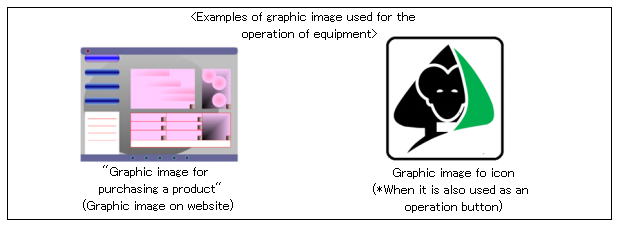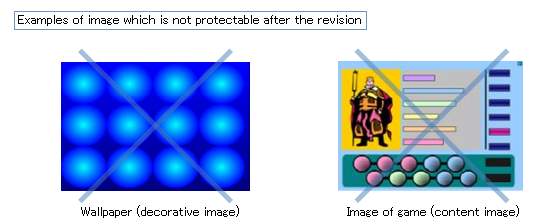To those in the IT (software) industry

(1)Introduction

After the IT revolution occurred from the end of the 20th century to the beginning of the 21th century, IT technologies are still remarkably developing. Now, many people use products and services created due to benefits of the IT technologies. Examples of such products and services include e-mails, online shopping services, SNS (Social Networking Service), information home appliances, and cloud services. The IT technologies also play roles of an infrastructure to support our lives and economies. Further, use of the IT technologies is still increasing year by year. This trend can be seen from a prevalence rate of “smartphones” which can be referred to as a compilation of the IT technologies (for example, prevalence rate of the smartphones is over 90% in the twenties and thirties and over 80% in the forties and fifties (as of 2019)).
Entire sales of the IT industry (i.e., the information service industry) began to grow rapidly in the 1990s, and, as of 2017, the sales reached 1.75 trillion yen. Now, the IT industry has an enormous scale close to the scale of other basic industries in Japan, such as the automobile industry and electronics industry. Thus, the IT industry is one of the industries which attract attention the most, and are expected to have expansion of demand and supply steadily in the future.
The information service industry includes a wide range of industries, such as a software industry, an information processing and providing industry, and an Internet-related service industry. In this web page, we would like to introduce topics mainly related to those in the software industry. We hope this web page benefits those who are considering filing of a design application.
(2)Major revisions to the Design Act and the Examination Guidelines for Design related to GUI designs (came into force on April 1, 2020)
A GUI design on a screen is important because it determines software’s operability and sense of beauty. If the GUI design is unattractive, a user would not become interested in the software even if the software has an excellent function or a good price. This is true especially in the smartphone application software market which has been booming in recent years.
In the 2006 revision to the Design Act, a graphic image newly became a target of protection, but only an image recorded in an article beforehand was protectable. In the 2016 revision to the Examination Guidelines for Design, GUI design which is, for example, installed afterward became protectable.
It has become usual for us to install an application corresponding to smartphones from App store® or Google play® in accordance with rapid development of information communication technologies in recent years, and in most of the advanced countries, GUI is the target of protection. The aforementioned 2016 revision to the Examination Guidelines for Design was made to follow this trend.
And now the 2019 major revision to the Deign Act was made. As a result of this revision, the target of protection has been further enlarged since April 1, 2020, and an image displayed via the Internet (image itself which is not recorded in an article) is now protectable.
<Protection system for graphic design after revision on April 1 in 2020>
- (1)The way to obtain protection as a graphic image design (a graphic image itself, separated from the article)
*"Graphic image design" is a new target of protection which has became protectable as a result of this revision. - (2)The way to obtain protection as a design including a graphic image as a part of the article or the building
◆The revisions to the Design Act and the Examination Guidelines for Design have made it possible to protect graphic image design (a graphic image itself, separated from the article).
One of the purposes for this revision is to give an applicant the exclusive right also with respect to GUI etc. used in services offered by the Internet, such as cyber malls and music download services, so as to facilitate companies to recover the expenditure for development.
⇒Accordingly, this revision is meaningful to companies which develop and sell software for smartphones and computers.
Examples of graphic image design which is now protectable


<From JPO website>
*A graphic image which does not fall under any of a graphic image used for the operation of equipment (operational graphic image) and a graphic image displayed as a result of the equipment performing its function (displayed graphic image), such as the content of movies or games, is not found to be a design under the Design Act as before.
Examples of image which is not protectable after the revision

(4)Risk of infringement due to expansion of protection range
As described before, as a result of the 2019 revisions to the Design Act and the Examination Guidelines for Design, graphic designs which were out of the range of protection before are now protectable. Accordingly, using such graphic designs while wrongly believing that there is no problem in the use based on the dated knowledge might cause infringement of a design right owned by another person or company.
In order to avoid such a situation, prior design search is useful. This search will enhance the possibility of using a design safely or obtaining a design right surely.
(5)We also support overseas design registration application
Today's IT industry has no border in its business range. The IT industry deals with electronic data which is basically “intangible”, and thus products made by imitating a design for the electronic data easily appear on the market through the Internet. In particular, an image design for software can be imitated without difficulty in Japan and abroad and thus easily causes damages.
Accordingly, we strongly recommend those in the IT industry to file a design application also in other countries at the same time as you obtain a design right in Japan. Please feel free to contact us also when you consider expanding your business in other countries.
Management of design rights differs among countries. For example, (i) European countries and the United States which are advanced countries in intellectual properties where graphic designs became protectable ahead of Japan, (ii) East Asian and South East Asian countries which are experiencing rapid economic growth recently, and (iii) other countries each have their own practice, and require their own know-how about a manner to resister a design. Having the experiences in the field of design rights, we are happy to support you.
Japan joined the Hague Agreement in 2015, which allowed us to file international design applications. With use of this system, it is possible to simplify registration procedures and reduce cost.
(6)We support those in the IT industry
In the IT industry, in many cases, much effort is made in a graphic design so that the graphic design attracts users’ attention among enormous competitive products. However, once the graphic design hits on the market, the graphic design is imitated and the imitated design appears on the market in a moment.
There may be some cases where those in the IT industry will face a situation that forces them to deal with an issue of intellectual property rights. We have established a system to provide a thorough support for protecting intellectual properties of those in the whole IT industry as well as those in the software industry. Please feel free to contact us.
意匠の疑問・お悩みはHARAKENZOに相談ください!

意匠登録や意匠トラブルの解決にあたっては、専門家の判断が欠かせません。
意匠のことでお悩みがありましたら、いつでも知的財産のプロフェッショナル集団であるHARAKENZO事務所にご相談いただけます。
